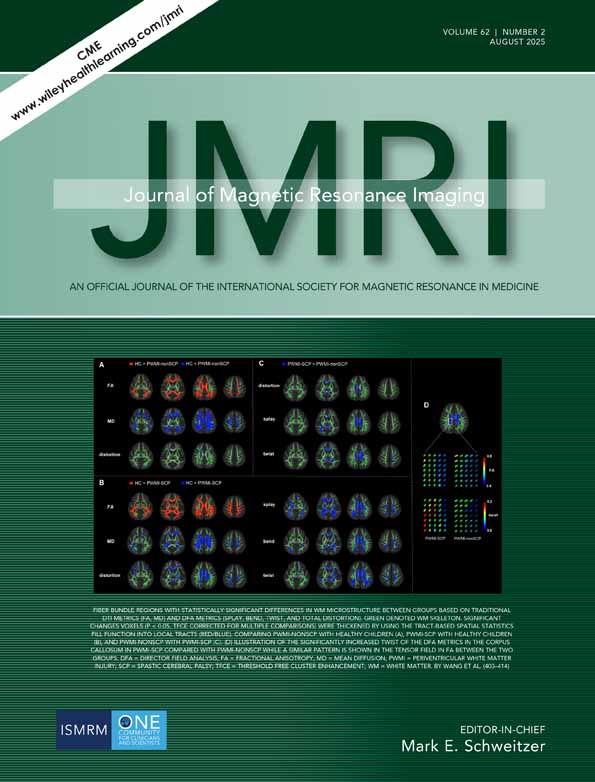Evaluating the Diagnostic Performance of MR Cytometry Imaging in Differentiating Benign and Malignant Breast Tumors
Funding: This work was supported by the National Key Research and Development Program of China, 2022-YFC-2405303 and National Natural Science Foundation of China, 2024-NSFC-62401329.
Co-first authors Fan Liu and Lei Wu contributed equally to this manuscript.
Co-corresponding authors Haihua Bao and Diwei Shi contributed equally to this manuscript.
ABSTRACT
Background
MR cytometry is a class of diffusion-MRI-based methods that characterize tumor microstructures at the cellular level. It involves multicompartmental biophysical modeling of multi-b and multiple diffusion time data to generate microstructural parameters, which may improve differentiation of benign and malignant breast tumors.
Purpose
To implement MR cytometry imaging with transcytolemmal water exchange (JOINT and EXCHANGE) to differentiate benign and malignant breast tumors, and to compare the classification efficacy of IMPULSED, JOINT, and EXCHANGE.
Study Type
Prospective.
Subjects
115 patients with pathologically confirmed breast tumors (25 benign and 90 malignant).
Field Strength/Sequence
3T; pulsed gradient spin-echo (PGSE) diffusion-weighted imaging (DWI) and oscillating gradient spin-echo (OGSE) DWI at 25 and 50 Hz.
Assessment
Tumor regions were delineated by two radiologists on DWI. Time-dependent ADC and microstructural parameters (cell diameter , intracellular volume fraction , water exchange rate constant , extracellular diffusivity and intracellular intrinsic diffusivity ) were calculated. Classification performance was assessed in the original cohort and in an age-adjusted cohort (excluding older malignant patients to eliminate significant age differences).
Statistical Tests
Mann–Whitney U-tests compared benign and malignant tumor values. Multivariable logistic regression used a stepwise approach based on the likelihood ratio test. The area under the receiver operating characteristic (AUC) was computed and compared by using the DeLong test.
Results
In the full analysis (25 benign, 90 malignant), microstructural parameters from methods incorporating transcytolemmal water exchange (JOINT and EXCHANGE) demonstrated superior performance (AUC: ADC, 0.822; IMPULSED, 0.840; JOINT, 0.902; EXCHANGE, 0.905). Combining different metrics further improved classification (AUC: IMPULSED [, ], 0.942; JOINT [, ], 0.956; EXCHANGE [, ], 0.954; [], 0.927). These improvements were also observed in the age-adjusted analysis (25 benign, 42 malignant).
Data Conclusion
MR cytometry outperformed ADC in distinguishing benign and malignant breast tumors. Incorporating transcytolemmal water exchange into biophysical modeling further improved its diagnostic performance.
Evidence Level: 1
Technical Efficacy: Stage 2




